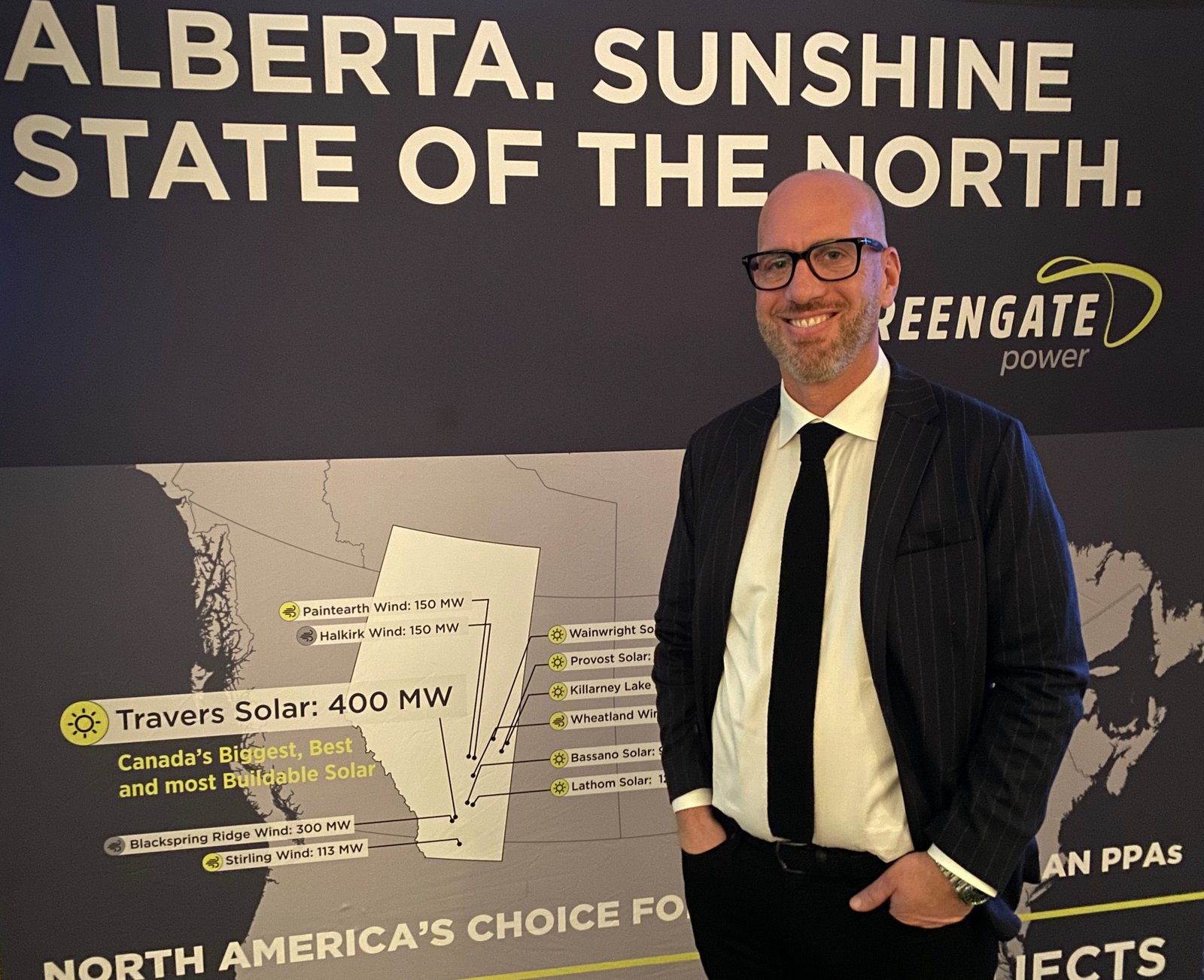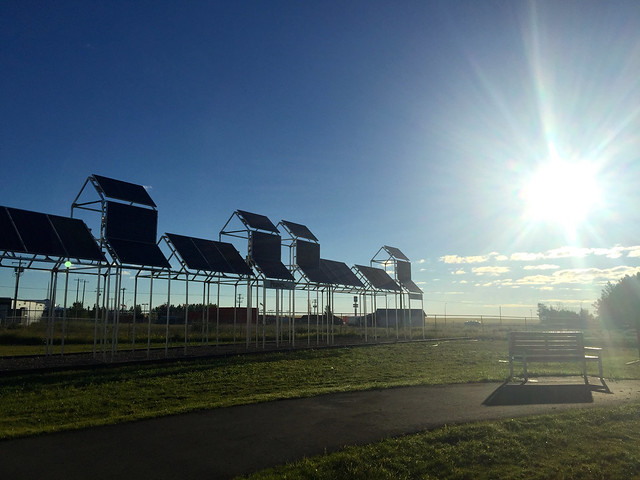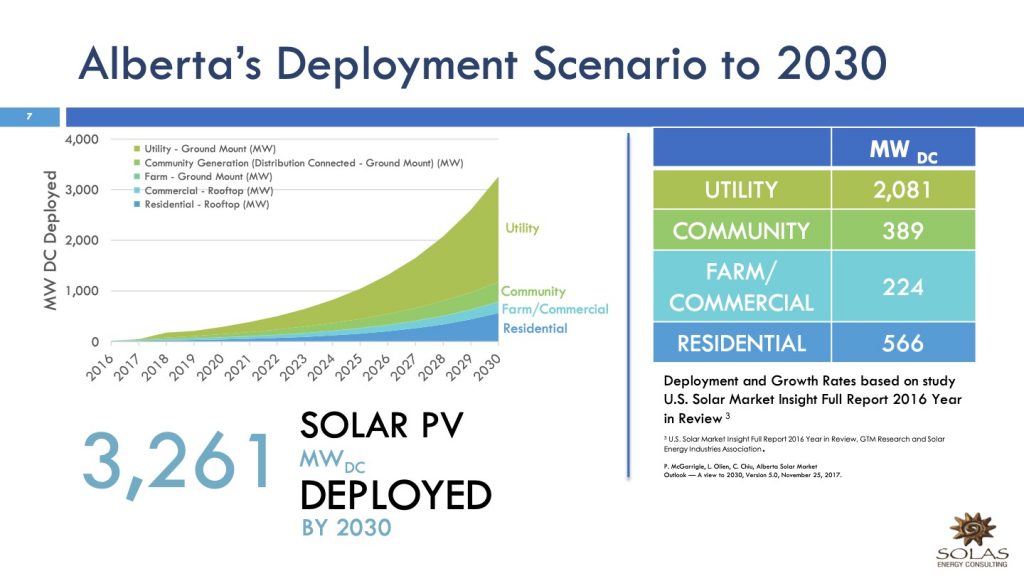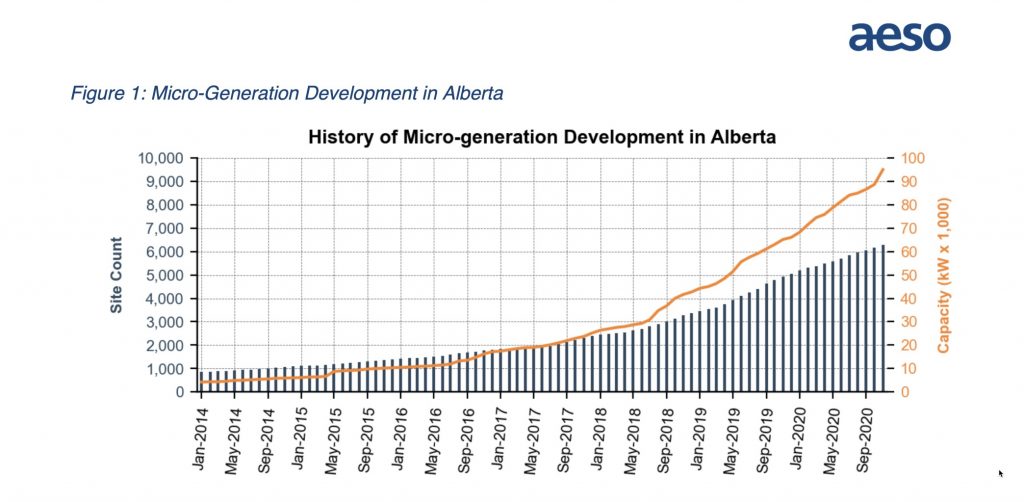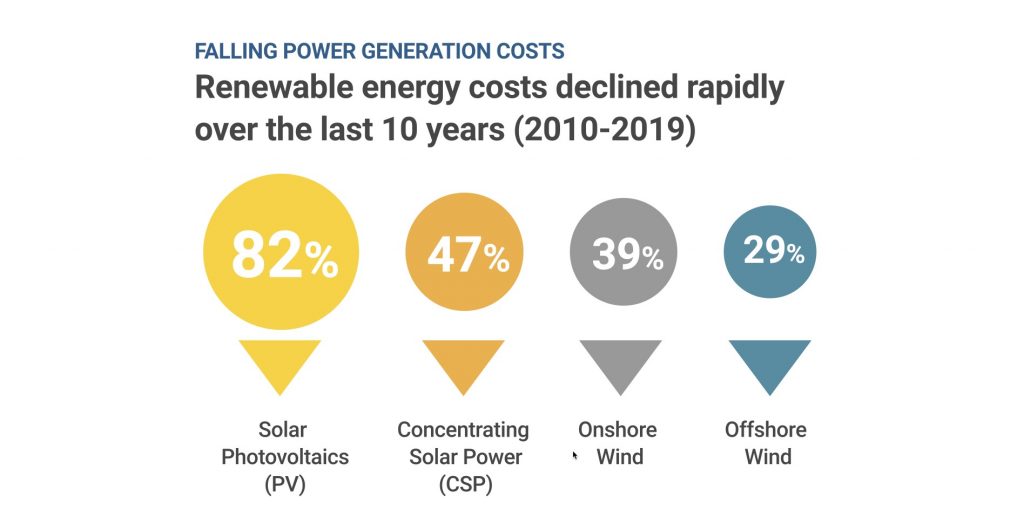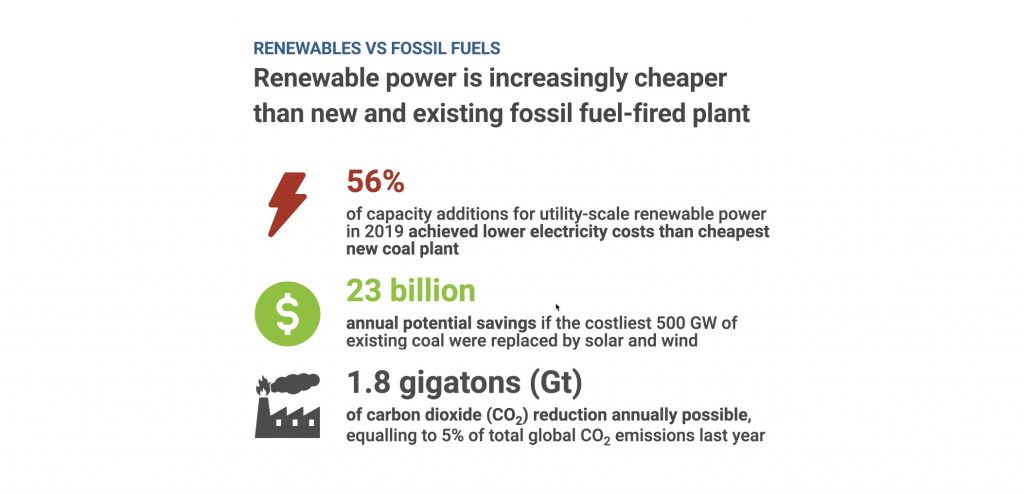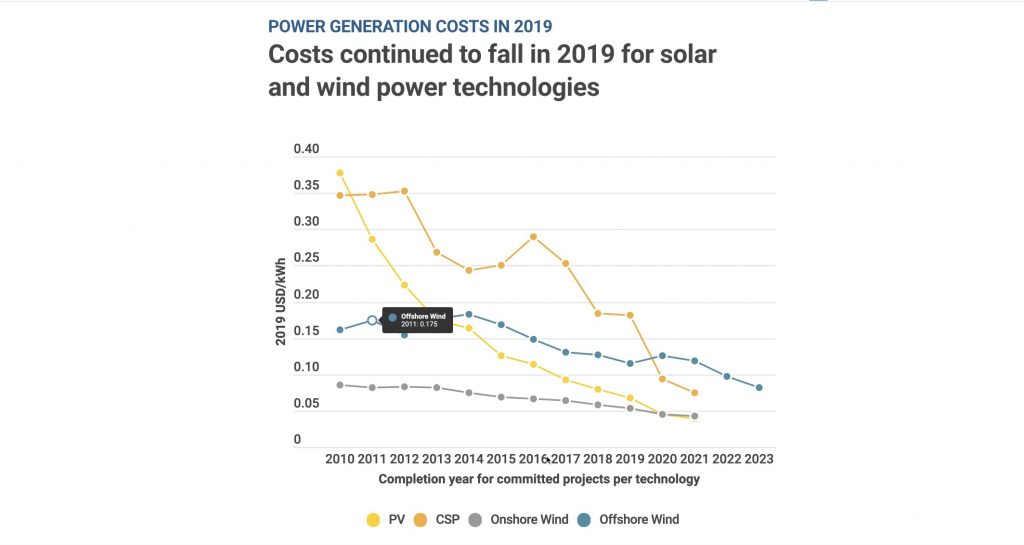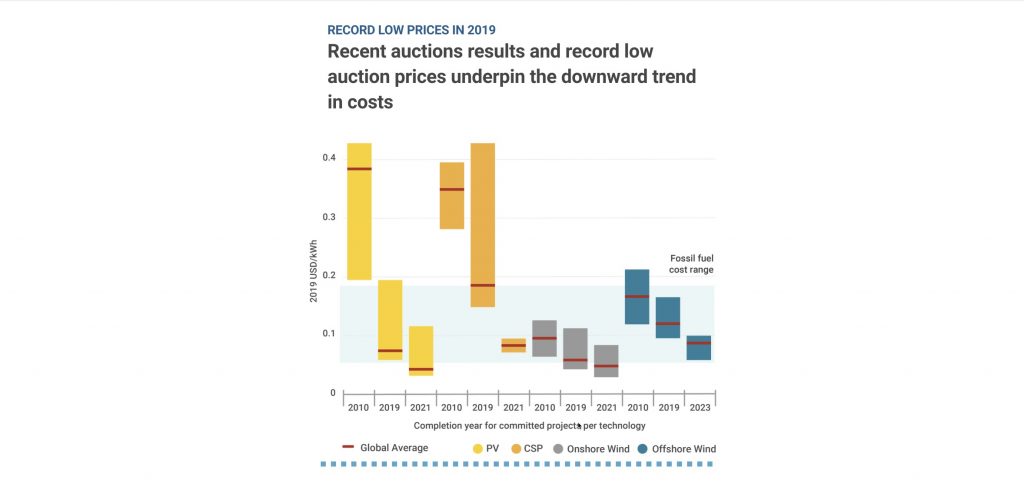By David Dodge and Kay Rollans
“Small is beautiful.” In 1973, E.F. Schumacher used this phrase to combat the “bigger and more is better” premise of globalization and the deleterious effects he saw it having on the lives of people. Since Schumacher, the phrase has been used “to champion small, appropriate technologies or polities that are believed to empower people more.”
Small-is-beautiful thinking certainly applies to solar in Alberta.
The most democratic form of energy every conceived, solar barely existed in Alberta prior to 2010. As of late 2020, however, individual Albertans and small businesses have installed 6,168 small solar systems on homes and businesses.
Edmonton’s Mosaic Center, the city’s first net-zero office building, has been solar from the start. Others have retrofitted their properties with solar systems. The Evansdale Community League in Edmonton, for example, has installed 26 kilowatts of solar since 2015, allowing it to produce 95 per cent of its net electricity use.
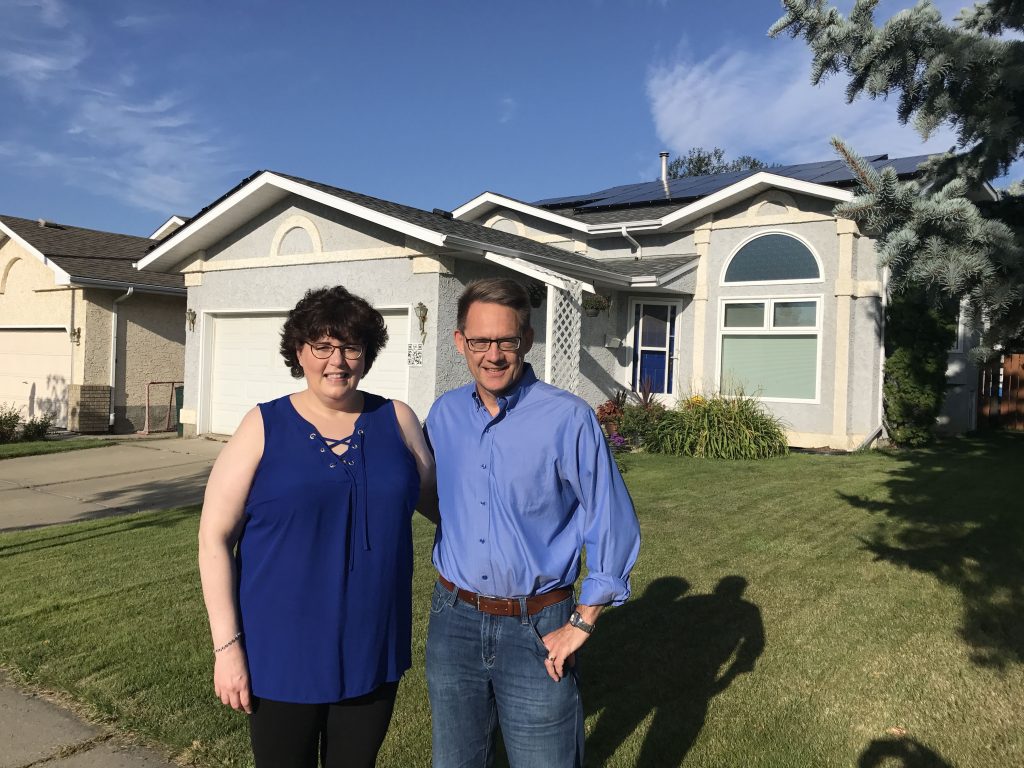
Private citizens such as Ron Kube in St. Albert, Alberta, have also jumped on the solar train. Kube installed a nine-kilowatt solar system four years ago. Thanks to energy efficiency measures, he now produces enough electricity to run his home, power his electric car, and still have some left over.
Together, these small solar systems represent an amazing 88 megawatts AC of generating capacity. That’s enough energy to power 17,000 homes.
But you don’t see evidence of this small-scale solar on the grid, because much of the electricity is used behind the meter. These small producers export only the electricity they can’t use as is permitted under Alberta’s Micro-Generation Regulation.
Luckily, it seems that solar can be just as beautiful at large scales as it is at small scale—and it’s cheap, too. In fact, in 2019, the International Renewable Energy Agency declared solar and wind as the cheapest ways to generate electricity. Period.
And yet, when it comes to big solar, Alberta has only 107 megawatts of generating capacity on the grid as of early 2021. What’s very surprising is all of those more than 6,000 small solar systems add up to 88-megawatt capacity, stunning proof of the democratization of energy potential of solar.
Green Energy Futures Solar Story Gallery
What, you might ask, is going on?
Perhaps you’re thinking, Schumacher was right all along and only the small can be beautiful. But before you get too excited, check out the numbers.
Alberta might not have a lot of big solar right now, but it has 5,000 megawatts of solar on the Alberta Electric System Operator (AESO’s) development queue. We are effectively in the eye of a solar storm.
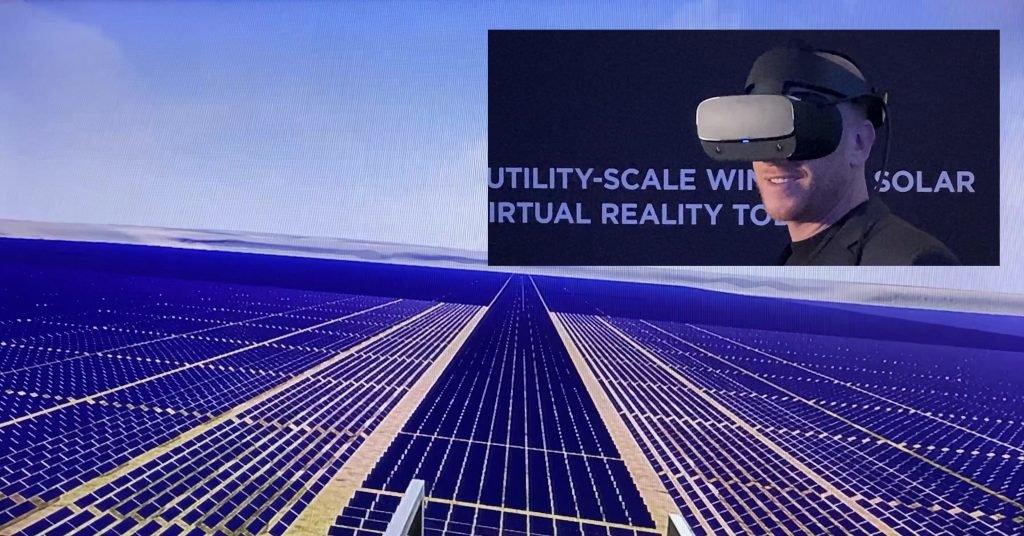
Eye of the solar storm
In late 2020, Green Energy Futures traveled to the small southern-Alberta community of Claresholm to visit its eponymous solar farm. We were there to look at some of the behind-the-scenes jobs in solar. We found Alberta Screw Piles Ltd. which has the contract to install 53,000 solar screw piles, which will support 477,000 solar modules. Business is booming for them.
At 132 megawatts, this will be the largest solar farm not only in Alberta’s history but in Canada’s as well.
But it won’t be the largest for long.
Greengate Power’s Travers Solar Project, now in development near Vulcan, Alberta, will consist of more than 1.5 million solar modules and produce 465 megawatts of electricity: enough for more than 100,000 homes.
And then there are all of the mid-range projects. Earlier last year, we did a story on Faruq Vishram, an Alberta engineer who pivoted from designing control systems in coal and gas-fired power plants to solar in 2014. He’s currently working on almost a dozen solar projects in the 20-megawatt range in Alberta and Ontario.
All in all, there are 79 projects totaling 5,000 megawatts AC of utility scale solar on the docket in Alberta right now.
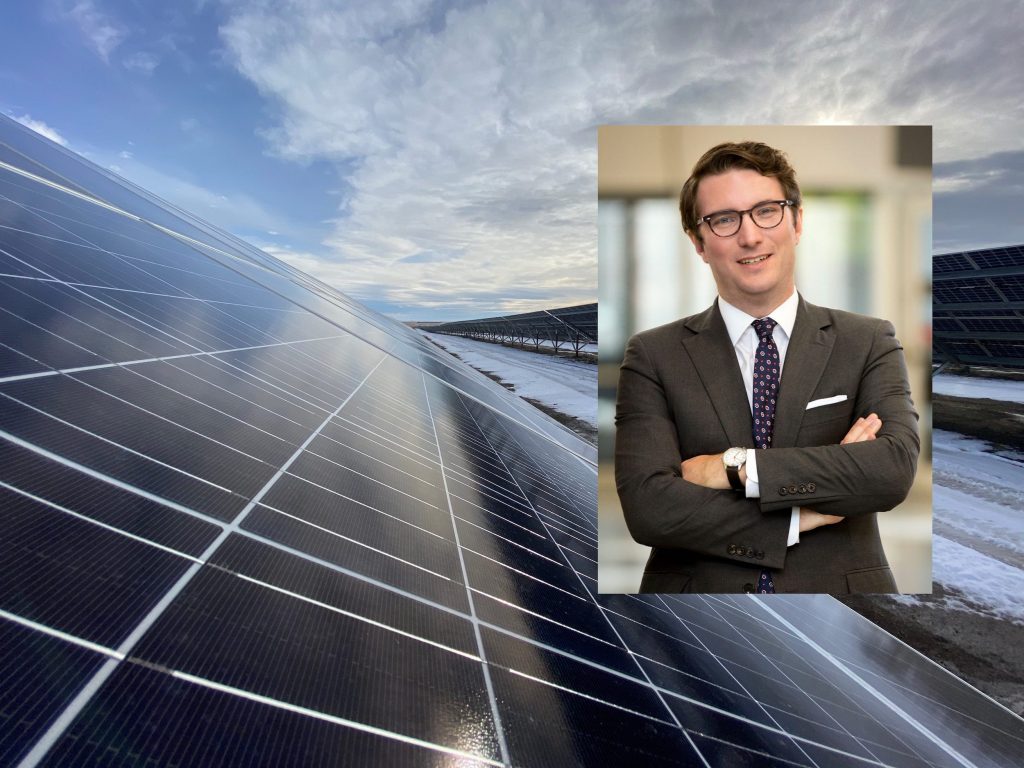
Alberta’s changing energy landscape
Evan Wilson of the Canadian Renewable Energy Association (CREA), an industry group that represents the solar, wind and energy storage industries, explains what these numbers mean.
Wilson says that the first hurdle all of these projects have to jump is investment. There are “five thousand megawatts of projects in this list that are looking to figure out how to crack the code on making investments in the province,” he says.
It turns out the best place in Canada to crack that code and attract investment is Alberta.
“The 79 projects aren’t all going to get built, but there’s 79 projects worth of development going on, trying to figure out how do you get the edge over your competitors to connect.”
A 2018 supply chain study used 2016 data and forecasted that 3,261 megawatts of solar will be developed in Alberta by 2030. This gives you sense of how much of the 5,000 megawatts now in the queue will be developed. Remember this was before recent declines in the cost of solar.
Solar’s journey to lowest cost in 5 charts
Back in 2017 when the previous Alberta NDP government announced they would accelerate the phase-out of coal and that the province would get 30 per cent of its electricity from renewables by 2030, the renewable’s landscape was very different.
The NDP’s accelerated coal phase-out was to be completed by 2030. In recent months, several companies have announced that the phase out will, in fact, be complete seven years ahead of plan, by 2023.
On such company is Capital Power, which is repowering coal plants—that is, retrofitting them as more efficient, natural gas combined cycle units—and investing in renewables.
Alberta’s home-grown renewable energy stars
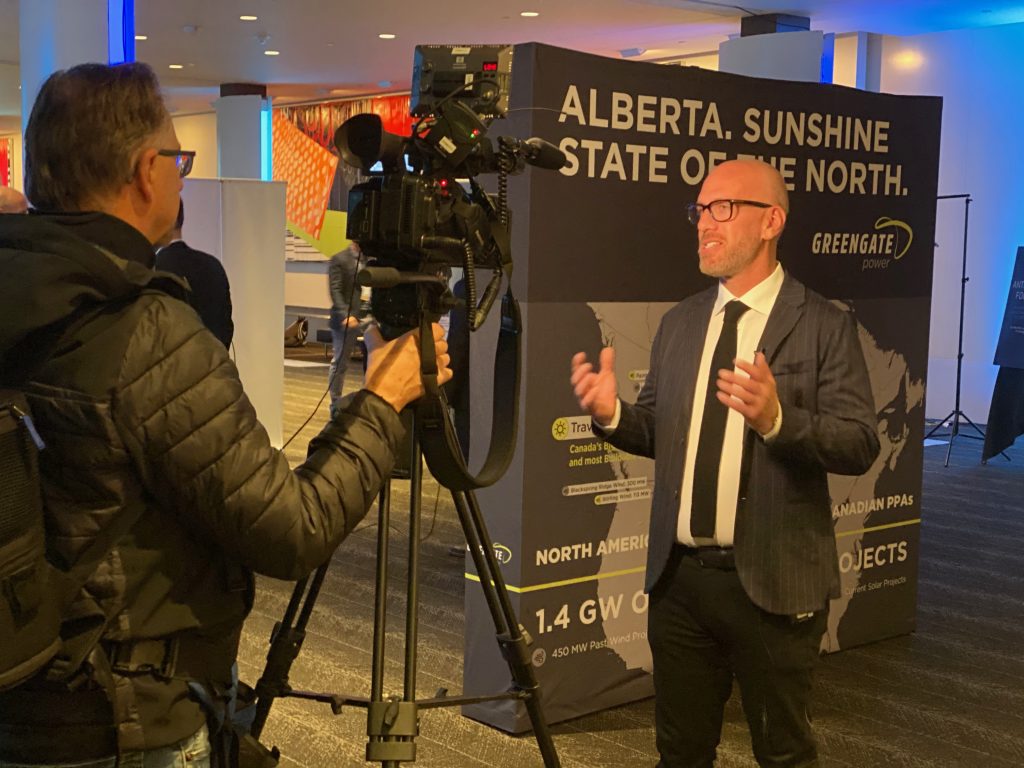
A key player in Alberta’s green energy transition, Greengate Power is a relatively small company in Calgary, Alberta. Dan Balaban is the company’s CEO.
Balaban came from the oil industry and started in renewable energy a decade ago, when the renewable energy boom was silent for another reason: it didn’t yet exist.
With Greengate Power, Balaban was changing Alberta’s energy landscape before it was cool.
In 2013/2014, he developed the largest wind project in Canada at the time: the 300-megawatt Blackspring Ridge Wind Farm, just north of Lethbridge, Alberta. He was also behind the 150-megawatt Halkirk Wind Farm in central Alberta.
Renewable energy was more expensive then. Balaban made his projects viable by selling carbon credits to California. California stopped buying credits from projects in far flung places soon after that, preferring instead home-grown projects in California.
But the winds in Alberta have shifted—and so has the sun.
With its 465-megawatt Travers Solar Project, Greengate has secured more than $500 million in funding from Denmark’s Copenhagen Infrastructure Partners.
The belle of Alberta’s renewable energy ball, Greengate will soon have the distinction of developing both the largest wind and the largest solar projects in Canadian history.
Greengate also has the 120-megawatt Lathom solar project in the works as well and three wind projects: Stirling, Wheatland and Paintearth with a combined capacity of 383 megawatts.
Perhaps more importantly, the company is proving to the global industry that big solar in Alberta is worth big investments.
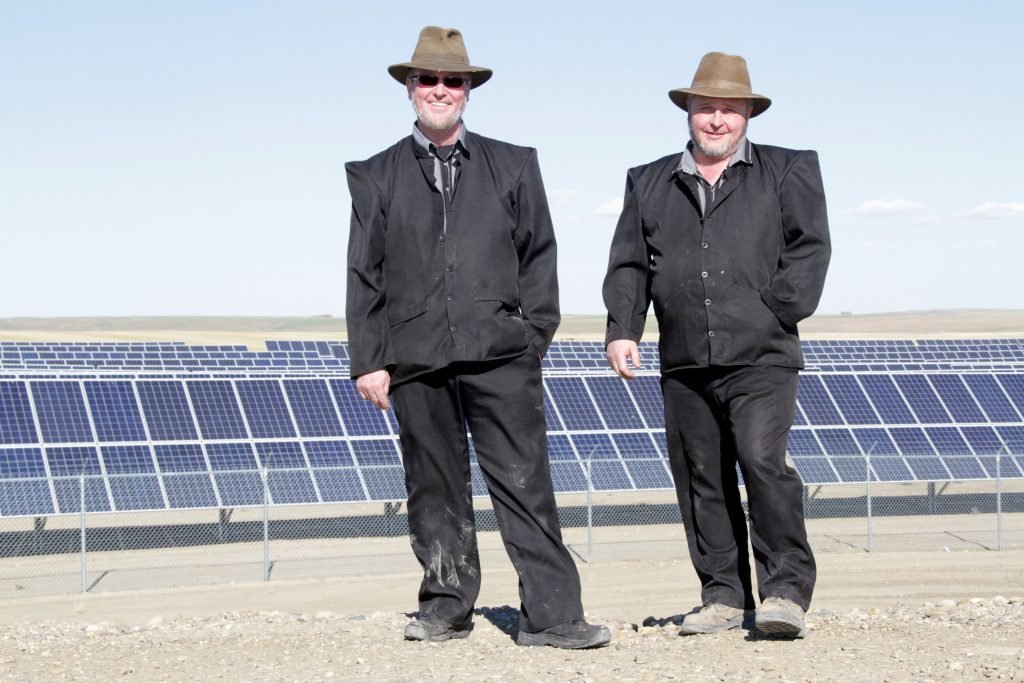
It’s game on for the solar boom
In 2017, most experts expected 95 per cent of Alberta’s renewable energy in 2030 would come from wind power. Now they aren’t so sure.
Around the same time, the NDP government launched the Renewable Energy Program (REP), securing 400 megawatts of wind power for record low average of 3.7 cents per kilowatt hour. This sent ripples across Canada and beyond.
Soon after, Alberta procured solar energy for just 4.8 cents per kilowatt hour—a record low price at the time.
Today, solar is neck and neck with wind as the cheapest way to generate electricity.
We are finally starting to see this play out on the ground in Alberta. “The REP process busted the narrative and proved we can do renewable energy projects at low cost,” says Balaban.
When Balaban’s Travers Solar Project attracted $700 million in investment, people really began to open their eyes to the incredible potential of solar in Alberta—so much so the Project Management Institute of Canada named Travers one of the Top 10 Most Influential Projects in Canada.
This makes sense to Evan Wilson, who says that investments in Alberta solar are only natural. “There are really some massive investments being made in solar in Alberta because of the power of the solar resource here, because we have so many sunny days in Alberta.”
“On top of that,” he says, “we have an energy-only market where if you want to build a power plant, you don’t have to wait till someone asks you to do it. As an investor, you can take that risk to build a power plant and connect it and sell as much power as you can.”
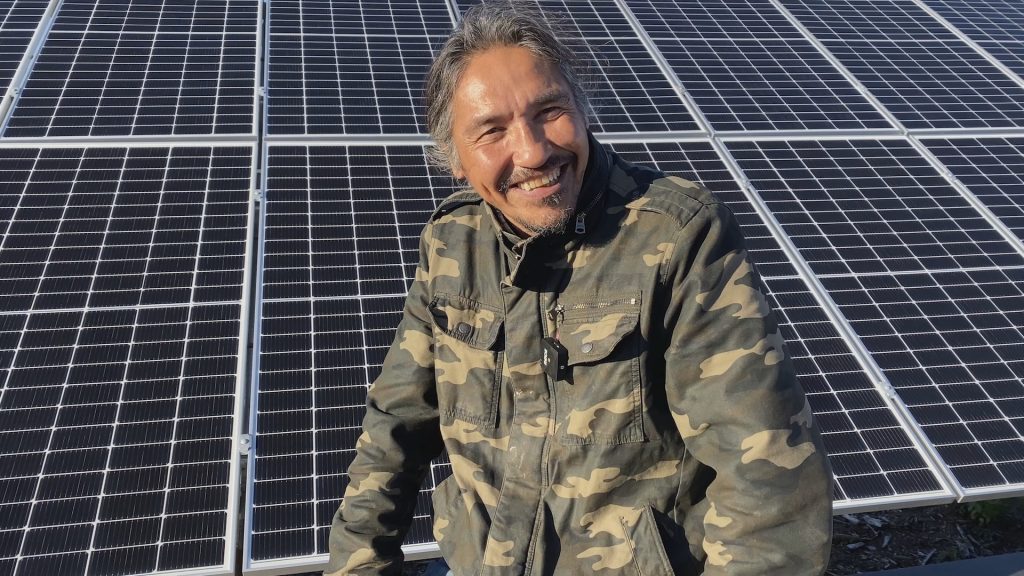
Renewable revenue: Three ways to play
There are three key ways companies will make good profits from solar in Alberta.
First, because of the low cost of solar energy, developers believe they can make money selling electricity into Alberta’s deregulated electricity market.
Second, they can take advantage of the carbon credits they will earn through low-carbon generation of electricity. Solar generation companies can simply sell their carbon credits as they earn them.
Many energy purchasers, however, want to purchase both the carbon credits and the clean energy together. Energy generators can, therefore, also choose to bundle their credits with their electricity in power purchase agreements (PPAs).
Capital Power, for example, entered into a 25-year PPA with the 40.6-megawatt Strathmore Solar Project.
This is all part of the company’s “strategy towards a low carbon future with a target to be net carbon neutral before 2050,” said Brian Vaasjo, President and CEO of Capital Power in a media release in December 2020—a plan involves developing their own renewable energy projects as well.
A third way for companies to create revenue through renewable energy is through so-called power production agreements (PPAs), which allows buyers and sellers to lock in to agreements over the long term.
These are literally bankable contracts that allow developers to secure financing and that have been spurred on by companies and governments that want zero emissions electricity.
Global players such as Amazon, Apple, Google and Facebook are just a few giants that have pledged to secure 100 per cent renewable energy and are entering into very large agreements.
Closer to home, the City of Calgary made a similar type of agreement more than a decade ago with ENMAX; the Alberta Government did the same with their solar energy procurement three years ago.
The federal government just announced large procurement requests for proposals in Alberta. The same is true of the City of Edmonton, which is looking to use it purchasing power to secure 100 per cent renewable energy to fulfill the goals of its Energy Transition Strategy.
Wilson adds that “TELUS has made announcements about buying power from the Rattlesnake Ridge Wind Farm [near Medicine Hat], and RBC is buying power from solar plants that will be built by a partnership between [Calgary-based] BluEarth Renewables and Bullfrog Power.”
Also 500 Alberta schools banded together to purchase all of their electrical energy from the wind for several years now.
And these are just the agreements we know about.
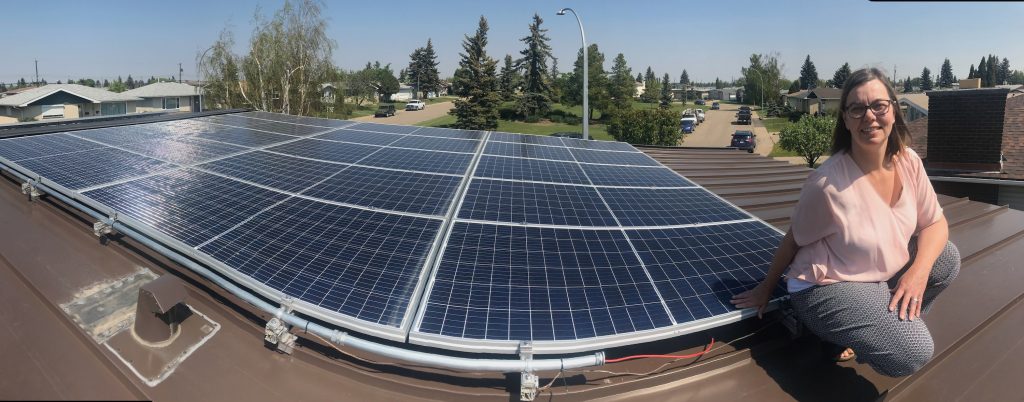
Viva la revolución solar
Nobody is tracking this revolution, but using the lowest development costs we could find—$1.25 million per megawatt for solar—we estimate that value of projects in the AESO development queue are worth at least $6.25 billion dollars.
As Wilson says, not all projects in the queue will be developed. Still, with this level of competition, we can expect that the projects that do go forward will be only the best of the best.
Market conditions for solar have never been better. Alberta is literally the best place in Canada for these projects right now, and it seems likely that future markets will only be busier.
We’ve just begun to scratch the surface of a solar revolution. You would think, in times of economic chaos in the oil industry and economic hardships wrought by the COVID-19 pandemic, that we would celebrate news about an economic boom.
As far as booms go, though, this one has been eerily silent—at least so far.
Perhaps we just prefer bad news.
“It’s so insane that we keep doubling down on the same old stuff and looking for the next big thing when that big thing is right in front of us, and it’s happening,” says Balaban.
The solar revolution has plenty in it for adherents of the “Small is Beautiful” worldview. It does represent an incredible democratization of energy. Quiet though it may be now, the economics don’t lie: this revolution will grow. And it will play out on both the big and small sides of the spectrum.
Viva la revolución.
Thanks to the Canadian Renewable Energy Association and Gordon Howell of Howell Mayhew Engineering for helping us wade through and understand the numbers.
